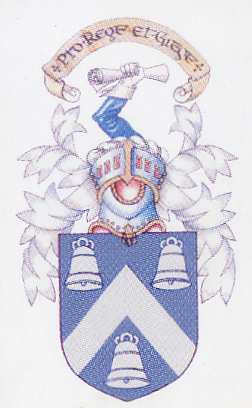
The Madras College Archive

|
|
The Madras College Archive |
|
|
Former Pupil Biographies Beatrice Huntington (1889 - 1988)
In 1906, aged seventeen, she moved to Paris, "through
the good offices of her mother", to begin training at the Heinrich
Knirr painting school. Knirr described Huntington as a "quite
wonderful artistic phenomenon". Thereafter, she studied drawing in
Munich and drawing remained a significant part in her work in later
life. After the end of World War One, in 1919, Huntington had her portrait, Mrs Mappin hung at the International in Paris during the last year that Degas was president. Returning to St. Andrews, Huntington went on to study in Dundee under William Macdonald. In 1920, Huntington became a member of the Society of Scottish Artists. An article in the Times in 1923, noted Huntington's work at the Scottish Artists' Society exhibition in Edinburgh that year in saying: "Prominent among the figure work are Alec Walker's "Queen and Page", a nude by David Foggie and Miss Beatrice Huntington's study of a Spaniard." During this period, Huntington also exhibited at the Allied Artists Association in London and with the Dundee Art Society. In 1924, already an accomplished musician, Huntington studied under the cellist Julius Klengel in Leipzig. The following year, William Macdonald and Huntington married and an exhibition of both their work was held in 1928, at Messrs Watt & Sons, Dundee. In 1929, the couple celebrated the birth of their son, Julius, and moved to live in a flat in Hanover Street, Edinburgh. This flat was to remain their home for the rest of their lives. Huntington and her husband spent large amounts of time in Spain, France and Canada. So much so that Macdonald was bestowed the nickname of 'Spanish Macdonald'. The influence of these trips are reflected in some of her work; notably A Muleteer from Andalucia. Her work in this middle part of her life (e.g. Artist's Model and Scottish Midwife) are thought to show elements of the cubist approach as they "are strongly expressive in the geometrical arrangement of colour echoing the language of cubism. During the 1930s–40s, Huntington regularly exhibited at the Royal Academy, the Royal Glasgow Institute of the Fine Arts and Royal Scottish Academy. She was a member of the hanging committee at the Royal Scottish Academy until she resigned on a point of principle before the outbreak of World War Two. Following the end of the Second World War, Huntington started exhibiting with the Scottish Society of Women Artists. However, due to her husband suffering from a prolonged bout of ill health, Huntington spent much of her time nursing him and was unable to do much painting in this period as a result. Macdonald died in 1960. In the decades which followed, Huntington set up a salon which young people were invited to visit and took up portraiture once more. She died in her sleep in 1988, aged ninety-nine. Retrieved from Wikipedia at:
|
|